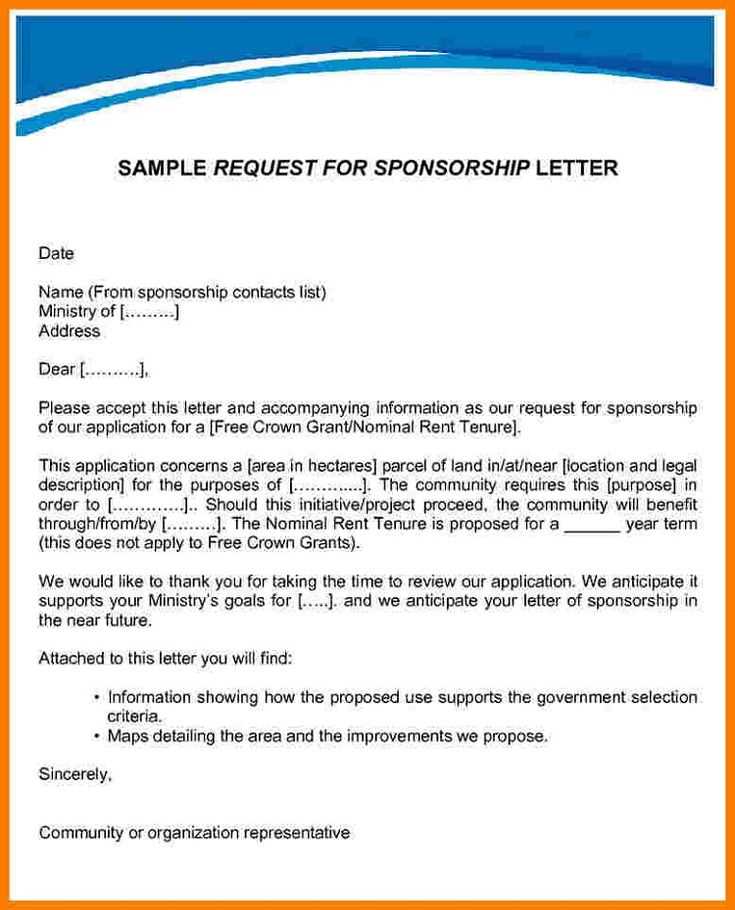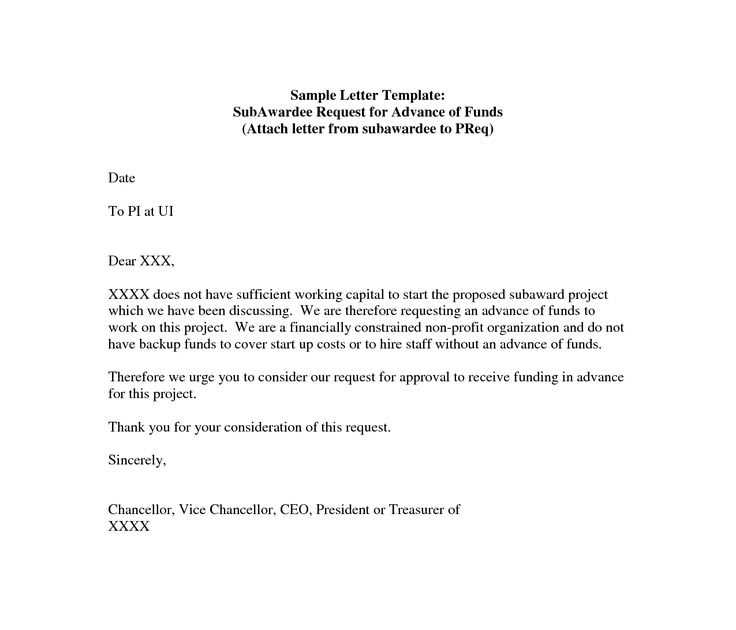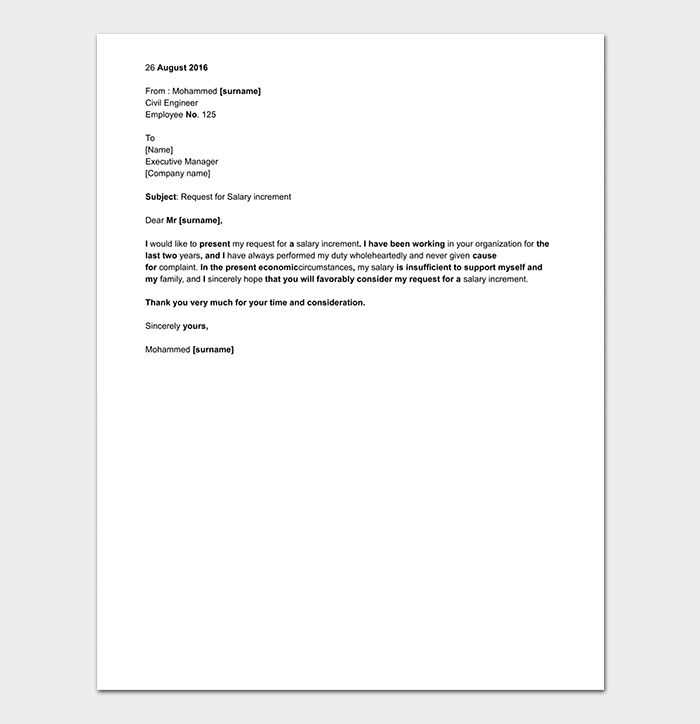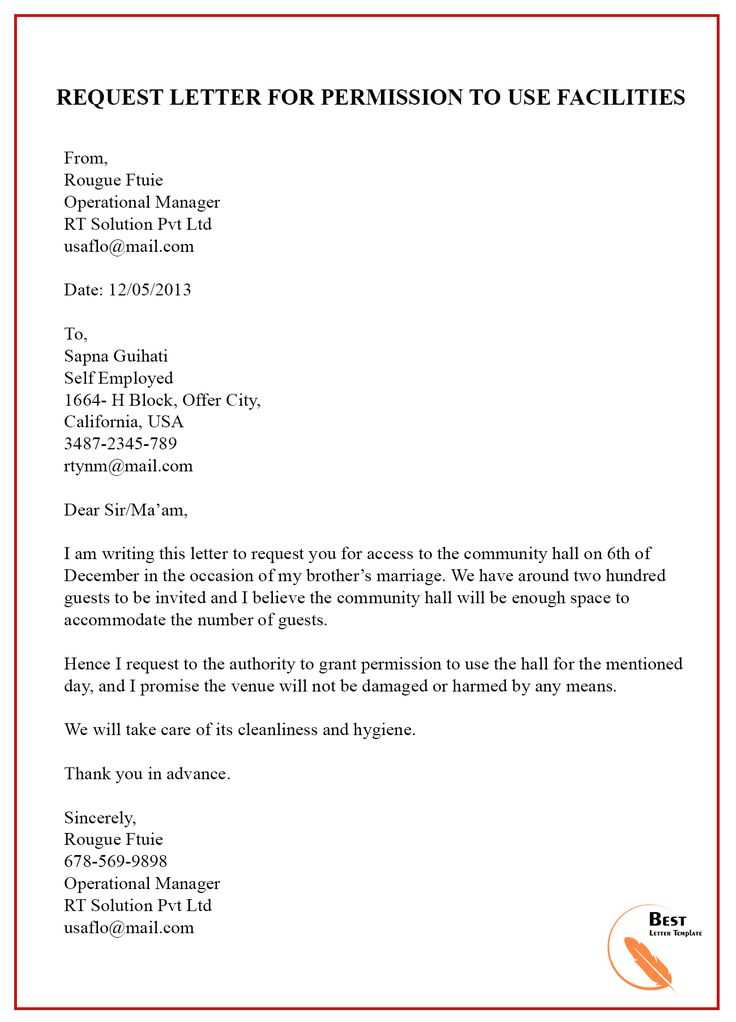Letter of Request Template for Professional Use

When you need to formally ask for something, it’s important to follow a structure that ensures clarity and professionalism. Whether it’s for a service, permission, or a change in terms, a well-crafted message can make a significant difference in getting a positive response. A clear, concise, and respectful communication is essential to achieving your goal.
Key Components of an Effective Request
To ensure your communication is professional and polite, include the following elements:
- Introduction: Start with a brief greeting and introduction to yourself or your purpose.
- Specific Request: Clearly state what you need or are asking for.
- Justification: Provide a reason or explanation for why you’re making the request.
- Closing: Finish with a polite conclusion, thanking the reader in advance for considering your message.
Writing a Clear and Direct Message
Avoid unnecessary complexity in your message. Stick to the point, using simple language and short sentences. Being too verbose can detract from the main purpose and make it harder for the reader to understand your needs.
Maintaining a Polite Tone
While being direct, ensure your tone remains polite and respectful. Phrases such as “I would appreciate,” “Kindly consider,” and “Thank you for your time” can help convey courtesy and professionalism.
Examples of Situations for Formal Requests

This approach can be applied in various situations, including:
- Requesting time off from work
- Asking for a meeting or appointment
- Seeking approval for a project or idea
- Inquiring about a product or service
By following a clear structure and maintaining professionalism, you can effectively convey your needs and improve the chances of receiving a positive response.
Understanding the Purpose of a Formal Inquiry

Effective communication is key when seeking assistance or making a proposal. Crafting a well-structured and respectful message ensures that your intentions are clear and understood. The goal is to express your need, provide a reasonable explanation, and make it easy for the recipient to respond favorably. A formal inquiry serves to establish a professional tone while facilitating a successful interaction.
How to Structure a Formal Request
When composing your message, it’s important to follow a logical flow. Begin by addressing the recipient, then clearly state your need or request. Next, explain why the request is important and relevant, offering any necessary details to support your case. Finish with a polite closing, expressing gratitude for their time and consideration.
Common Mistakes to Avoid When Making a Request

One of the most common errors is being unclear about what you need. Ambiguity can cause confusion and delay. Another mistake is writing overly complex or lengthy paragraphs, which can detract from your message. Additionally, maintaining a tone that’s too casual or demanding can undermine your professionalism.
By following these guidelines, you can increase the likelihood of your inquiry being taken seriously and receiving the response you desire.